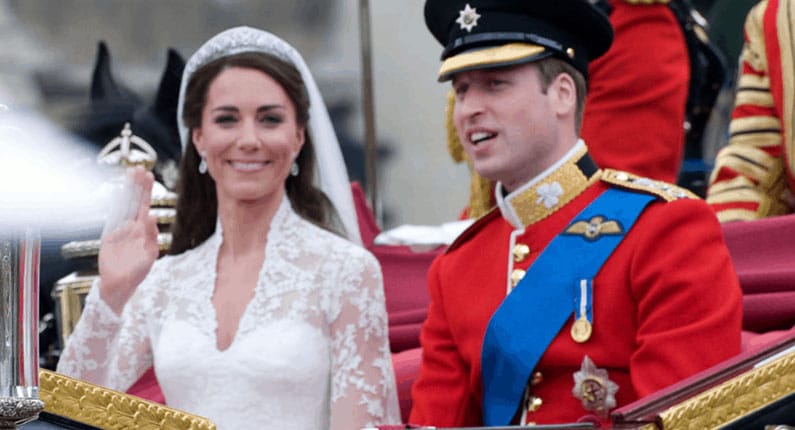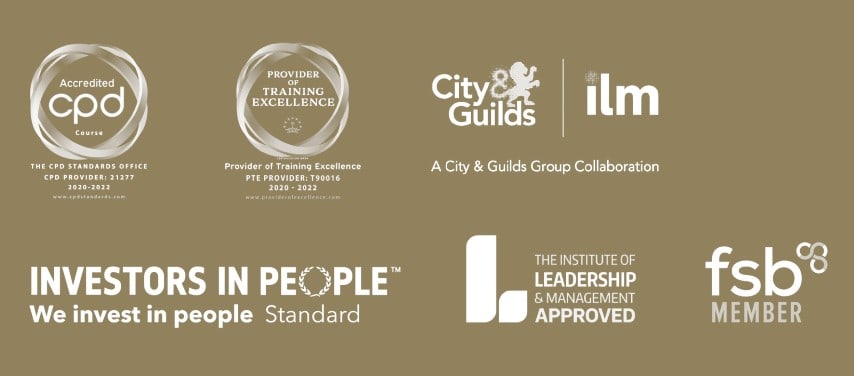
Prince Harry and bride Meghan Markle have continued many centuries-old royal wedding traditions – and created some new ones of their own.
– The royal bride always has a spare bouquet made, thanks to a mishap suffered by the Queen at her 1947 wedding. Her bouquet went missing between the newlyweds’ return to the palace and the wedding breakfast – so, in some of the official photographs, Princess Elizabeth simply clasps her hands together while her bridesmaids hold their bouquets. It is understood that a replica was made, and some photos recreated later on.
– The last royal wedding in Windsor was that of Prince Harry’s father Prince Charles to second wife Camilla Parker Bowles. They had a civil ceremony at Windsor Guildhall in 2005 with a blessing at St George’s Chapel. Harry’s uncle, Prince Edward and Sophie Rhys-Jones were the last royals to marry at St George’s Chapel, in 1999.
– The tradition of a white wedding dress was set by Queen Victoria in 1840. Before that, brides just wore the nicest dress they could buy in any colour they fancied. At the time, white was a colour to wear to funerals. Victoria wore a white veil – mainly to match the lace on her dress. Lace is also now traditional for a royal wedding dress.
– Royal weddings usually take place on a weekday, which is given as a public holiday, but Prince Harry and Meghan Markle picked a Saturday to marry.
– Ms Markle has no maids of honour: all the bridesmaids and pageboys are children. This is actually traditional for royal weddings; it was Kate Middleton who broke with tradition by inviting sister Pippa to be her maid of honour, in her infamously figure-skimming dress. Although a maid of honour is common practice in American weddings, officials said that Meghan could not choose between her friends.
– Members of the public were invited for the first time to Prince Harry and Meghan Markle’s wedding and given access to the Windsor Castle grounds – 1,200 plus local schoolchildren, staff from the royal households and Crown Estate and charity workers making 2,640 in total. However, the public guests are not invited to the St George’s Hall reception (for the 600-strong congregation attending the service) – and were even asked to bring their own picnics. It was decided to make the black-tie evening reception, hosted by Prince Charles at Frogmore House in the Home Park of Windsor Castle, a more private affair for 200 close family and friends.
– Royal bouquets always include a sprig of myrtle, ever since Queen Victoria initiated the practice; it symbolises luck, love and fertility. Victoria planted a myrtle shrub at Osborne House on the Isle of Wight to commemorate her wedding and every British royal bride since has had a sprig from the same bush. The Duchess of Cambridge added sweet William flowers, in a nod to her groom; Ms Markle’s bouquet adds white garden roses, peonies and foxgloves.
– The same State Landau carriage Prince Harry travelled in for his brother’s 2011 wedding has been pressed into service for the married couple this time around. It was built in 1883 for Queen Victoria. The 1902 State Landau originally made for the coronation of Edward VII carried Prince Charles and Princess Diana, and their son Prince William and Princess Catherine, after their respective ceremonies. But while Diana arrived at her wedding in an 1881 glass coach, Kate Middleton borrowed the Queen’s Rolls Royce Phantom car.
– King Henry I’s marriage to Princess Matilda of Scotland in 1100 was the first royal wedding to take place at Westminster Abbey. The Queen was the tenth member of the royal family to marry at the Abbey.
– Some 200 million people listened to the BBC radio broadcast of the wedding of the then Princess Elizabeth and Prince Philip in 1947. The first televised royal wedding was that of the Queen’s sister, Princess Margaret, to photographer Antony Armstrong-Jones in 1960, with an audience of 300 million. Around 750 million watched Prince Charles marry Lady Diana in 1981, while an estimated two billion watched Prince William marry Catherine Middleton in 2011 in one of the most watched events in TV history.
– She may be American but according to myheritage.com genealogists, Meghan Markle has British ancestral roots: she is said to be William Shakespeare’s fifth cousin, 13 times removed, on her mother Doria’s side and former British Prime Minister Winston Churchill’s sixth cousin, five times removed.
– Princess Diana was honoured by both her sons in their choices of engagement ring. While Prince William proposed with his mother’s own ring, a 12-carat sapphire surrounded by 14 solitaire diamonds and set in white gold, Prince Harry also used two diamonds from his mother’s collections in the ring he gave to Ms Markle.
– Queen Victoria also started the traditional of a wedding fruit cake, which continues to this day at royal weddings. Prince William, however, requested an additional groom’s cake, made of chocolate biscuits. Prince Harry and his bride also chose a second cake, flavoured with lemon and elderflower.
– Who pays? The Windsors have covered the cost of Prince Harry’s wedding, including Ms Markle’s £100,000 wedding dress, while the Middletons are understood to have paid for some items in their daughter’s £25 million wedding to Prince William – most probably her bridal gown and diamond earrings (which included acorns in a nod to the Middleton coat of arms). When Lady Diana Spencer married the Prince of Wales, her father, Earl Spencer, paid for her £9,000 wedding dress (about £25,000 today). Princess Elizabeth used 200 ration stamps to buy the fabric for her wedding dress.
Share This Page, Choose Your Platform
New Release
Crushing Etiquette
"Excellent book, extremely well written and top content, very informative and relevant to all in all walks of life and business and professionals globally that want to advance in their careers and businesses at any stage and increase their professional impact and potential."
R G Goodier
New Release
Around the World
with Etiquette
This expert-written handbook distills essential country-by-country etiquette – from table manners and business protocols to wedding customs – so travellers, expats, and global professionals can avoid faux pas and make a polished impression abroad.
The British School of Excellence is the #1 industry leading organisation in etiquette, manners, life skills and service training.
The British School of Excellence is a certified Disability Confident Employer.
We believe that we are the best at what we do, but don’t just take our word for it – see the reviews of our courses at the independent review site Coursecheck.
Become a part of the BSE community to keep up to date with our courses, articles and news. Become a better, more confident and professional you!



Strewn with real-life stories, fun facts, playful wordsmithing and engaging rhetoric, this handbook will take you from the dining table to the boardroom table and even beyond borders.